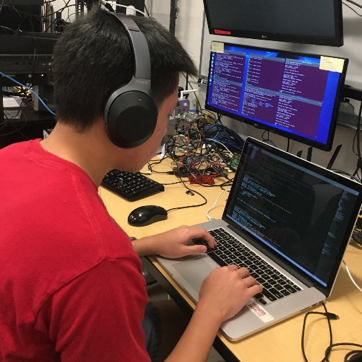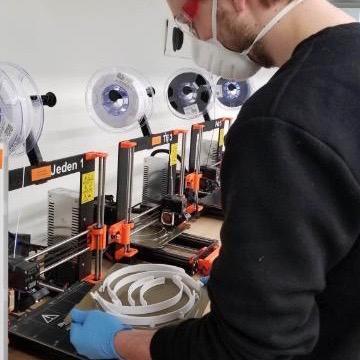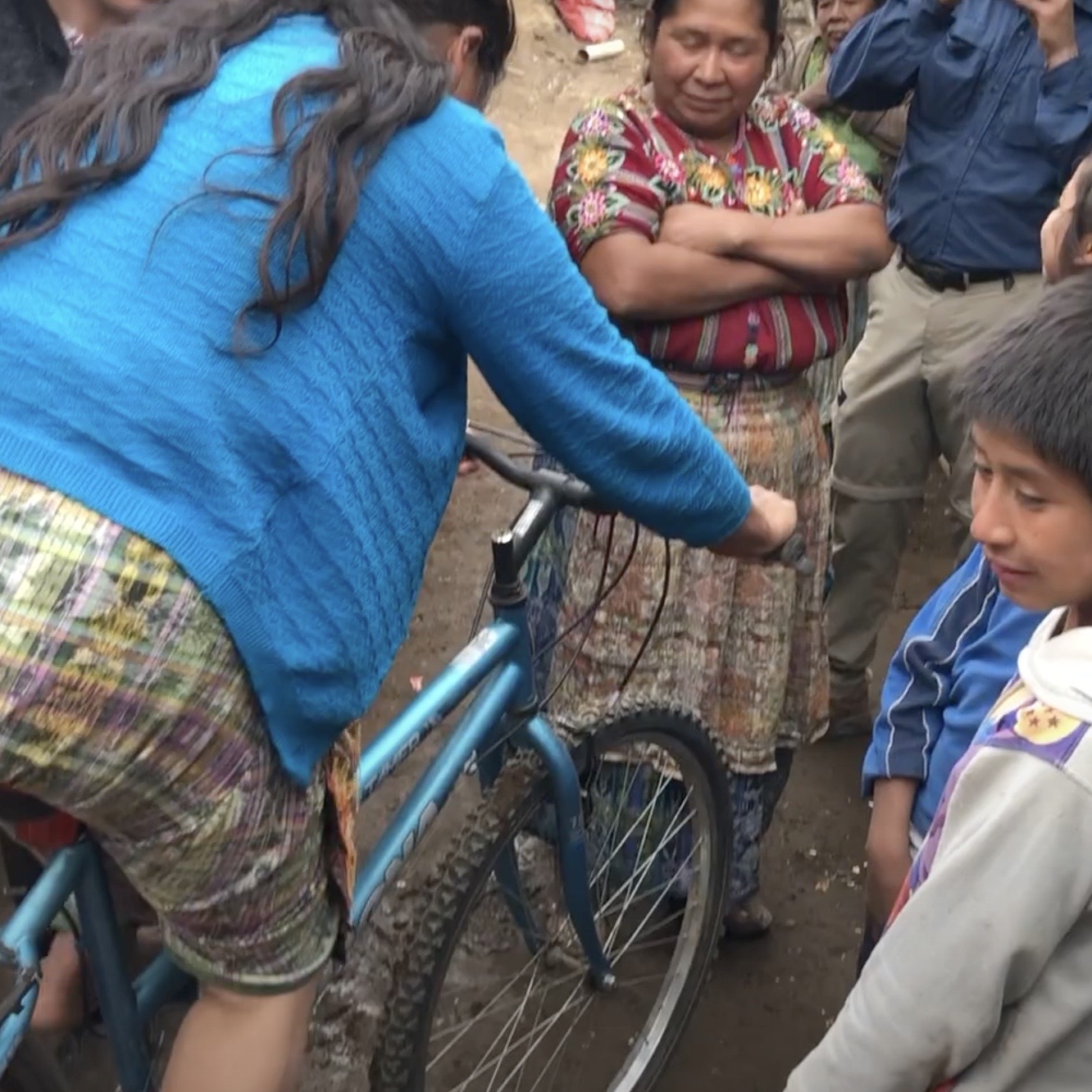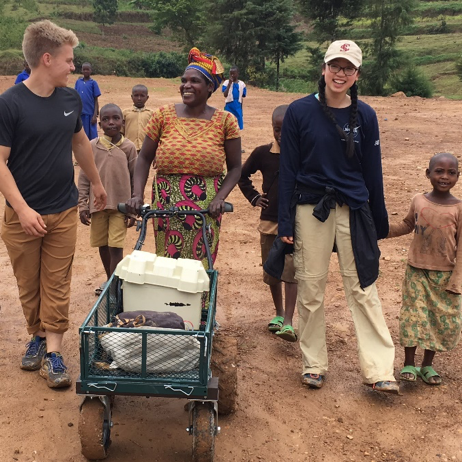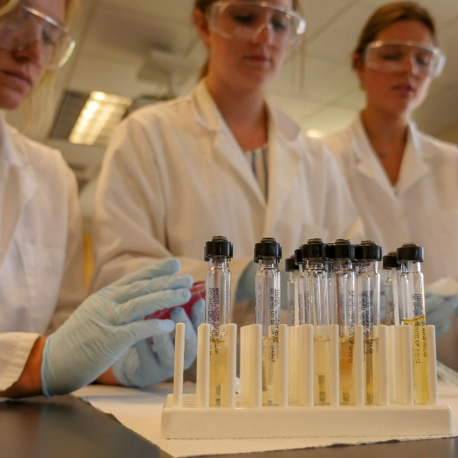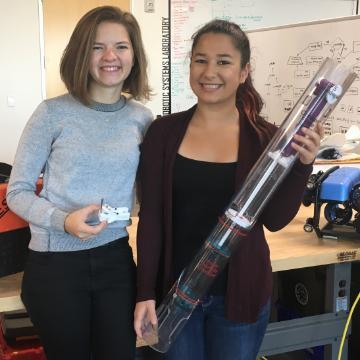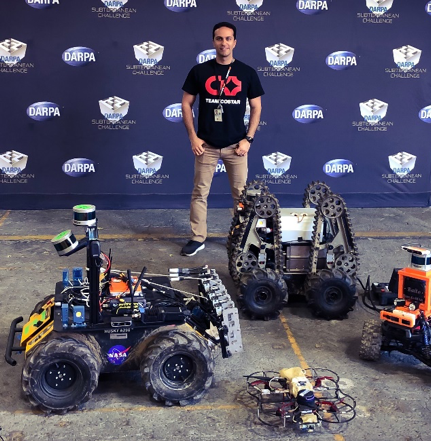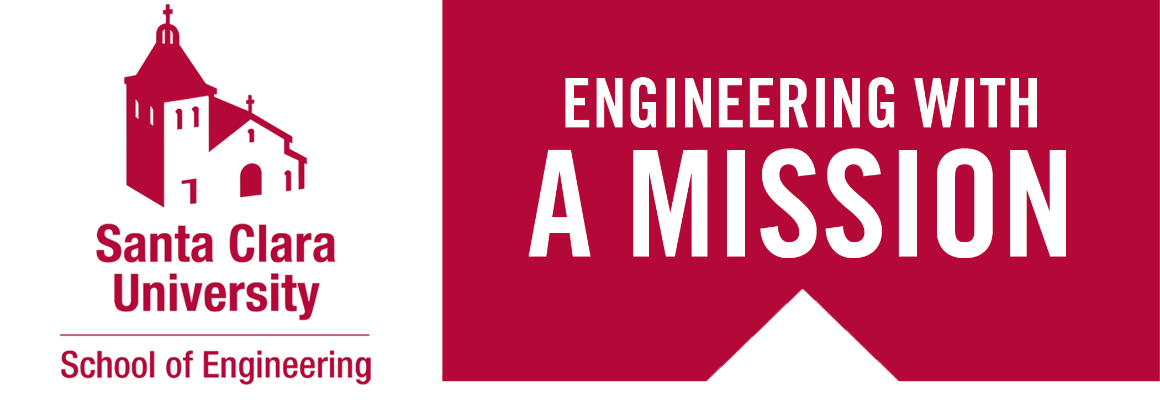
At Santa Clara University we are Engineering with a Mission, dedicated to excellence in engineering education, to student learning, and to providing impactful experiences in and out of the classroom. Our students are driven to use their knowledge and talents to improve lives.
Fueling Curiosity
Learning doesn’t start in a classroom but with a question. Engineering students at SCU learn how to challenge the world around them and look for ways to make it better.
Even in Silicon Valley, many people have difficulty accessing fresh, nutritious food. For their senior design project, electrical and mechanical engineering undergraduates designed a solar-powered, self-monitoring aquaponics growing system for a neighboring community. Now, fresh produce is regularly harvested from the system to supplement meals served by a local nonprofit.
From remote health assessments to smart agriculture and smart cities, students in SCU’s Internet of Things Lab are changing the world in which we live and work. A flood monitoring system the students designed for the City of San Jose has been deployed for over a year now, and students are working on deterministic software-based packet switching, virtualization and coordination of processing tasks, and so much more. Learn more here.
Helping the Santa Clara University campus meet its climate neutrality goals, Latimer Energy Lab graduate researchers ran simulations and modeled solar installations on buildings across campus to develop a plan for a solar microgrid that will increase on-site renewable energy generation.
Fostering Engagement
At Santa Clara University, we’re driven to build a more just, humane, and sustainable world. International research, immersion experiences, and community outreach projects provide real-world knowledge and help our students build empathy while advancing their technical skills and engineering acumen.
With eleven 3D printers standing at the ready in the School of Engineering’s Maker Lab, faculty member and lab director Christopher Kitts knew Santa Clara University was in a position to help mitigate the Coronavirus pandemic. Within days, a partnership was launched, a safety protocol was developed and approved, special university access permissions and authorizations were granted, and a small team of engineering graduate students, faculty, and staff began printing parts for medical use face shields. Learn more here.
Working with clients from around the world, students in the Frugal Innovation Hub advance humanitarian technologies as they take on a wide range of projects. Recently, students joined forces with Maya Pedal—a nonprofit in Guatemala helping those in need gain access to potable drinking water while promoting community involvement ow women and children—to design, build, and implement a bicycle-powered water purification and transportation system. Watch here.
SCU’s Engineers Without Borders student chapter actively collaborates with a women’s tile-making cooperative in Rwanda. Projects have included a tile press, water treatment system, and electric clay transport wagon. But it’s not all about engineering. Teams traveling to Rwanda visit the Kigali Genocide Memorial and meet with local NGOs and government officials. Understanding the history, politics, and culture of the community is crucial—to the success of the project and to the growth of our students.
Starting from a position of customer empathy, engineering seniors collaborate with teammates from SCU’s public health science program to develop a low-cost, non-invasive system to detect cervical cancer, for use by women in developing countries. The project carries on from year to year with new student teams.
Creating Collaboration
Through faculty-led projects, hands-on labs, senior design capstones, and communal maker spaces, Santa Clara University engineering students share expertise and work together to solve complex problems.
Children with asthma don’t always receive the treatment they need because they feel stigmatized or don’t want to sit still long enough to use a nebulizer, so a local pediatrician reached out to the BioInnovation and Design Lab for help. Bioengineering students developed a nebulizer disguised as a water bottle, allowing portable and discreet treatment for patients of all ages. More here.
For more than a decade, Santa Clara University engineering students have been running satellite operations for NASA. For the EcAMSat mission, SCU’s interdisciplinary team of undergraduate and graduate students operated the satellite after launch, executed the primary science experiment, collected and decoded data, and maintained the health of the satellite over several months.
The Robotics Systems Lab, recognized by the National Academy of Engineering as an exemplary program for real-world engineering, is ground zero for students and faculty from more than 10 departments to design and deploy advanced robotic systems and autonomous control technology missions on land, and in air, sea, and space.
Teaching Innovation
Instilling an entrepreneurial mindset in our engineering students is a top priority at Santa Clara University. We teach students to seek out and define big issues and develop solutions that create value for customers and society. Students are encouraged to think beyond the engineering to the ethical and social repercussions of their work. They’re taught to be comfortable with ambiguity and how to try, fail, and try again. That’s our mission.
Partnering with the India-based Jaipur Foot organization, engineering teammates developed a pulley tendon system for the HELP Hand—a Human-centered Electric Prosthetic—which they are designing to appear as lifelike as possible. Though the teammates graduate, the work continues as the prototype is passed off to the next class of students to refine and one day brings to market. More here.
Working as a doctoral research fellow, electrical engineering Ph.D. candidate Kamak Ebadi was tapped to join the NASA Jet Propulsion Lab team in the prestigious DARPA Subterranean Challenge. Kamak’s lidar-based simultaneous localization and mapping (SLAM) algorithm helped his team’s fleet of fully autonomous robots map and explore multiple underground caves, earning them second place in the “Tunnel Circuit” portion of the competition! More here.
Robot-assisted surgery makes difficult operations less invasive. At Intuitive Surgical in Sunnyvale—one of the top employers of Bronco engineers—student interns and alumni employees are making the procedures even safer. During his internship, Andrew Torrance ’19 created a more efficient process for lubricating surgical staples for the Da Vinci Surgical System.

